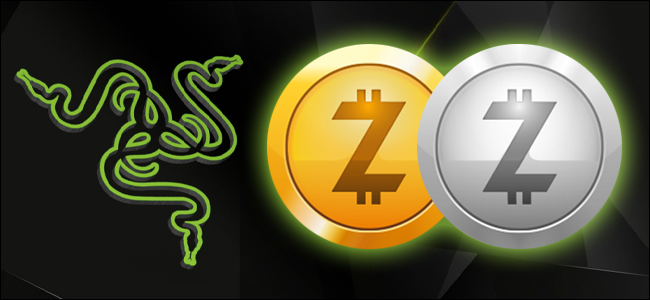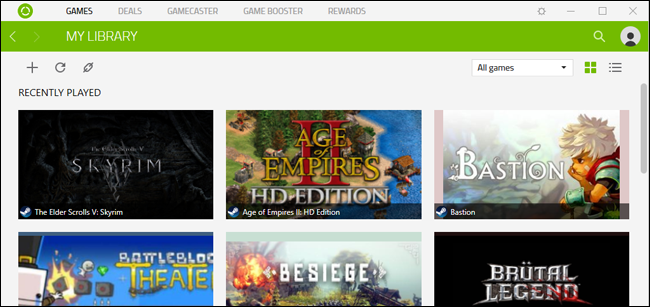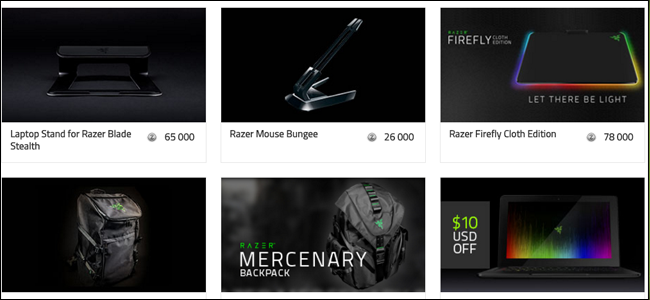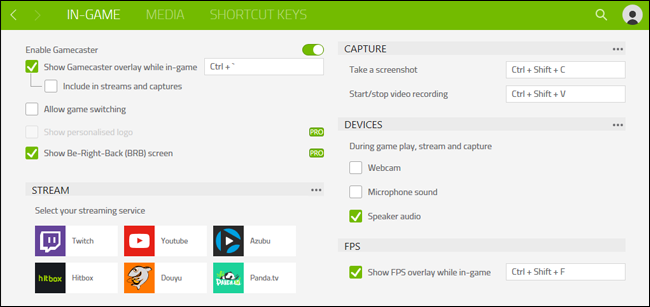Quick Links
Razer recently announced a new customer loyalty program: PC gamers can earn virtual currency, called "zSilver" and saved in a "zVault," just for playing the games that they're already enjoying. Games are launched from Razer's Cortex desktop program---a bit like Steam without the built-in game store---and tracked minute-by-minute, earning zSilver that can be exchanged for Razer-branded hardware goodies.
But is all of this worth it? Not really. Like most customer loyalty programs, using Cortex as anything but a bonus for things you would already do anyway is a losing game. Limitations on the system mean you'll be spending hundreds of hours playing only a few different games chasing those rewards. Let's break it down, shall we?
A Day in the Life of a Razer "zGamer"
zSilver accumulates as you play titles launched from the Razer Cortex desktop program. The good news is that the process is fairly simple: just launch the game and the program will keep a running tally of your playtime, accruing points with each minute. The bad news is that while Cortex can detect almost any game on a standard PC (and new games can be added to the list manually), only a handful of games actually give you credit in zSilver for playing them through Cortex. At launch, the list is quite short:
- Counter-Strike: Global Offensive
- DOTA 2
- League of Legends
- Overwatch
- Paladins
These games represent some of the biggest entries in their respective genres, but a list of only five supported titles rather curtails the enthusiasm behind Razer's broad statement that one can "play games on Cortex and get rewarded with zSilver." If you want to spend a little time in Skyrim or Minecraft or Rocket League, not to mention any newer games, you'll be doing it sans Razer-branded rewards.
Doing the Math
The worse news is that the system is more or less designed to keep you from earning too many points too quickly. Playing one of the supported games will earn you 3 zSilver points per minute---not a bad rate of return, as these things go. But that still means you'll be earning a maximum of 180 points an hour, assuming you spend the full hour in-game (and you don't forget to launch it from the Cortex program). Razer is offering a few bonuses at launch, but they won't get you very far for very long.
On top of that, zSilver is capped at a maximum of 900 points per day, so gamers can't simply marathon their way into getting Razer-branded goods. And even assuming no other bonuses, that's a pretty long amount of time to play every day to reach your maximum earnings: a full five hours of game time. Most people with jobs and other responsibilities simply can't justify spending almost a third of their waking hours playing PC games.
The Long Haul
But just for the sake of demonstration, let's assume that you're a huge fan of Counter-Strike, League of Legends, and Overwatch, and you're down for playing the rather restrictive list of games exclusively and extensively to earn those points. How long will it take you to get some sweet Razer gear?
A long, long time.
Razer's promotional items from its hardware catalog start at 26,000 zSilver points and go up. The most expensive hardware item on the list, the company's top-of-the-line Blackwidow Chroma mechanical keyboard, costs 220,000 points. That's 245 days of maxed-out zSilver points---remember, that's 5 hours every day, so over 1200 hours of game time. Here's the breakdown for all of the rewards offered by Razer at launch, assuming players earn the maximum 900 points per day:
- Mouse bungee: 26,000 zSilver, 29 days/145 hours
- Laptop stand: 65,000 zSilver, 72 days/361 hours
- Firefly mousepad: 78,000 zSilver, 87 days/433 hours
- Utility backpack: 90,000 zSilver, 100 days/500 hours
- Mercenary backpack: 130,000 zSilver, 144 days/722 hours
- Kraken headset: 130,000 zSilver, 144 days/722 hours
- Mamba wireless mouse: 195,000 zSilver, 217 days/1083 hours
- Blackwidow keyboard: 220,000 zSilver, 245 days/1222 hours
- $5 discount voucher: 2,500 zSilver, 2.8 days/13.8 hours
- $10 discount voucher: 5,000 zSilver, 5.6 days/27.8 hours
- $20 discount voucher: 10,000 zSilver, 11.1 days/55.6 hours
That's some serious play time just to get a little hardware. I can see that some dedicated players might get a few discounts on Razer gear, but with a maximum voucher value of $20 on any one item, there's a big gap between earning discounts and earning actual products. If you're already playing one of the supported games and you're planning on buying one of the items above, you might as well launch from Cortex and save up for a discount voucher. Otherwise, it really isn't worth the hassle.
zGold for Digital Purchases
So we can see that zSilver isn't a great return for time, but what about Razer's other digital currency, zGold? zGold can't be earned by playing games through Cortex, customers get it as a bonus for buying Razer retail products. At the moment, Razer's promotional offer gets shoppers 2000 zGold points---analogous to $20 USD--- for spending $200 or more on the website.
Oddly, despite the fact that it's earned for buying physical goods, zGold can't be spent on physical goods. zGold can be exchanged for in-game items in select titles like Crossfire, Smite, and Paladins. It can also be used to purchase full games on GamersGate or IndieGala, sometimes with a bit of a discount in terms of the zGold-to-dollars exchange rate. Shoppers who spend zGold on digital goods will earn some small bonuses to their zSilver wallets:
- Spend 500 zGold, earn 500 zSilver
- Spend 1000 zGold, earn 1200 zSilver
- Spend 3000 zGold, earn 4200 zSilver
Converting those values to real money and time, respectively, we see a maximum return of approximately .8 game-hours of credit per dollars spent.
Since you're unlikely to spend several thousand dollars on Razer gear just to get enough zGold for a few bonus games, Razer allows you to "top up" your zGold wallet with real money. There are discounts offered for spending more, but the wallet's maximum capacity is 50,000 points---$50 worth of real money. Even assuming you buy all of your games from GamersGate or IndieGala, you'll run out of benefits rather quickly.
And the last little topping on this consumerism sundae: the games you buy using zGold won't earn you zSilver while you're playing them, unless they're on that very limited list of games above.
What Else Can Cortex Do?
So we've established that installing Razer Cortex purely for the sake of earning Razer gear isn't a very good idea. But is there any benefit to Cortex at all?
Once again, the answer is: not really. Cortex does have a rather nice launcher for auto-detected games, but odds are pretty good that you're already using Steam for that. The software's Game Booster might help you get a few more frames per second out of some titles, but your graphics drivers probably already have this feature, and since the settings are auto-applied, it's best to tweak settings in each game manually (which most gamers know how to do anyway). The Gamecaster overlay can stream to Twitch, YouTube, and a few other game streaming websites with ease, which might be a nice perk if you're using any of the other features too...though the Pro version requires a hefty $15 subscription for just three months of use. NVIDIA and AMD's programs do this already, too---so why download yet another program?




